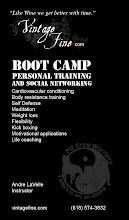In our new book Drink This, Not That!, we aimed our nutritional magnifying glass at the beverage industry, and found dozens of products we wouldn't want filling out our bodies—not anymore, at least. Before you take another sip, check out these six secrets we found lurking in your bottles, cans, and cups. Know the score and decide when and where to indulge—and how to lose weight effortlessly whenever you choose to.
1. Baskin-Robbins doesn't want you to know... it takes a degree in food chemistry to engineer one of its milkshakes!

Think about the first milk shake you ever drank. Chances are it was chocolate or vanilla, blended in front of you by a young man wearing a paper hat and a toothy grin. And how many ingredients did he plop into that metal cup? Well, there was ice cream, milk, maybe a little syrup. Now contrast that with the Frankenshakes at Baskin-Robbins. Many have more than two dozen ingredients. One, the Chocolate Chip Cookie Dough Shake, requires more than four dozen.
How did Baskin-Robbins transform the Chocolate Chip Cookie Dough Shake into a 50-ingredient science fair project? Well, sugar, in its various forms, graces the ingredient list seven times. Partially hydrogenated oil, the source of trans fat, shows up three times. Then there's a smattering of flavoring agents such as artificial butter flavor, vanillin, and salt, and behind that comes the cabal of emulsifiers, thickeners, colors, preservatives—not to mention industrial items like guar gum (do I really need gum in my shake?), carrageenan, polysorbate 80, and sorbitan monostearate.
Just as dismaying as the ingredient list is the nutritional breakdown: The large Cookie Dough Shake packs in 1,690 calories and 46 grams of saturated fat. That's two and a half days' worth of saturated fat. So much for an innocent summer indulgence.
2. The dairy industry doesn't want you to know... a hormone given to cows has been linked to cancer!

You've probably noticed that some milk jugs carry this claim: "from cows not treated with rbST." You might have also noticed a smaller claim: "No significant difference has been shown between milk derived from rbST-treated and non-rbST-treated cows."
Seem contradictory? It is. Here's the deal: rbST (also known as rBGH) is a hormone given to cows to increase their milk output by 10 to 25 percent. It was developed by biotech monolith Monsanto, and after an unsuccessful attempt to convince consumers of its safety, it was sold to Elanco, a company that specializes in agricultural pharmaceuticals. Monsanto fought hard to prevent dairy farmers from telling consumers whether their cows were treated with rbST. Dairy farmers who don't use the hormone fought back, and the result is the two statements appearing together on milk cartons.
The concern with rbST is that it produces milk with higher-than-normal levels of the insulin-like growth factor called IGF-1. Studies at the Channing Laboratory in Boston have shown that high levels of IGF-1 increase risk of several cancers, including breast, prostate, and colorectal. In the study, those with the highest levels of the hormone were four times more likely to develop cancer. True, other studies contradict these findings, but until the issue is resolved, we recommend playing it safe. Especially when so many big players—Starbucks, Kroger, and Wal-Mart among them—have agreed to sell only hormone-free milk.
3. The coffee industry doesn't want you to know... the average latte is worse than a double-scoop ice cream cone!

No source of sugar is more stealthy than the caffeine kicks dished out at coffee shops across America. Even an unflavored 16-ounce latte has close to 200 calories, and for the average person that represents nearly 10 percent of your daily energy requirements. Starbucks alone sells about two dozen drinks with more than 500 calories apiece. Drink something like that once a day, and you're facing at least an extra 50 pounds of flab each year! So, make coffee a habit more than coffee "drinks", and discover the secrets that help you eat, drink, and be healthy at your local coffeehouse.
4. 7Up doesn't want you to know... it takes a centrifuge to produce its "all natural" soda!

This might be the most flagrant abuse of the term "natural" we've seen. Even if you can overlook the fact that a 20-ounce bottle of 7Up has nearly as much sugar as five Breyers Oreo Ice Cream Sandwiches, that still leaves the issue of corn-derived sweeteners—which are about as natural as a Mickey Rourke expression.
To obtain the high-fructose corn syrup that spikes this bottle, corn is crushed into a slurry of fiber, protein, and starch. Everything is stuffed into a centrifuge to spin out the starch, which is then blended with enzymes that convert it to dextrose. The dextrose is then blended with more enzymes to convert it to fructose. Finally, glucose and fructose are stirred together to create a substance that has a flavor similar to table sugar.
Granted, many sodas contain high-fructose corn syrup, but 7Up is the only manufacturer that we've come across that's brazen enough to call its product natural. We call foul!
Bonus tip: For other "health" food imposters, check out the 30 “Health” Foods that Aren’t to learn how the rest of the food industry is secretly sabotaging your waistline, your wallet, and possibly your health.
5. The soda industry doesn't want you to know... some aluminum cans are lined with a toxic plastic!

You may have already heard of bisphenol A, or BPA, a chemical found in plastics that's been linked to myriad maladies. University of Cincinnati researchers found that low doses of BPA suppress a hormone that protects against diabetes and obesity. Another study at the Yale School of Medicine discovered that BPA disrupts brain function and leads to mood disorders in monkeys. Add that to the growing pile of evidence that show it lowers sperm counts and increases your risk of heart disease and breast, prostate, and testicular cancers, and you have many great reasons to avoid plastic bottles altogether.
But even if you've replaced your plastic food containers with glass, you're still susceptible to a BPA bludgeoning from aluminum cans. Aluminum is highly reactive, so manufacturers use a BPA-loaded epoxy lining to keep contents safe. The USDA is evaluating the safety of aluminum cans, but don't expect action anytime soon—the beverage industry will fight hard to keep its cheap fix.
In fact, in 2009, the Washington Post uncovered internal documents from Coca-Cola that outline a public relations strategy for persuading consumers that BPA is safe. Part of the plan: using fear tactics and targeting young mothers who make the most household purchasing decisions. Pretty scary stuff.
6. Juice companies don't want you to know... what goes into 100 percent juice!

Thanks to lax FDA regulations, fruit juice makers have a lot of wiggle room when it comes to labeling their bottles. One loophole they love: the "100 percent juice" claim. Yes, the bottle may have 100 percent juice, but not 100 percent of the juice you think you're buying.
Some juices—notably apple, grape, and pear—are cheap, abundant, and loaded with sugar, so manufacturers use them as fillers to stretch and sweeten more nutritious and expensive juices. You might think your bottle contains 100 percent blueberry or pomegranate, but it's just as likely to be a blend of inexpensive juices along with a splash of what you really want.
Last year, the FDA chastised Nestle for sticking 100 percent juice claims on its grape- and orange/tangerine-flavored Juicy Juice products. Turns out, these products were mostly apple juice. The only consolation: Juicy Juice said it'd fully cooperate with the FDA to find a resolution. We're not satisfied, though, at least not yet: Juicy Juice is just one of dozens of inauthentic products in the juice aisle.
But here's the good news: The smoking gun is often right on the bottle—in the case of Juicy Juice, it was small print that called each product a "flavored juice blend." Remember: The nutrition label doesn't always tell the full story. Read the ingredient list, too. That's how I'm beating my drinking problem. And you can too.








No comments:
Post a Comment